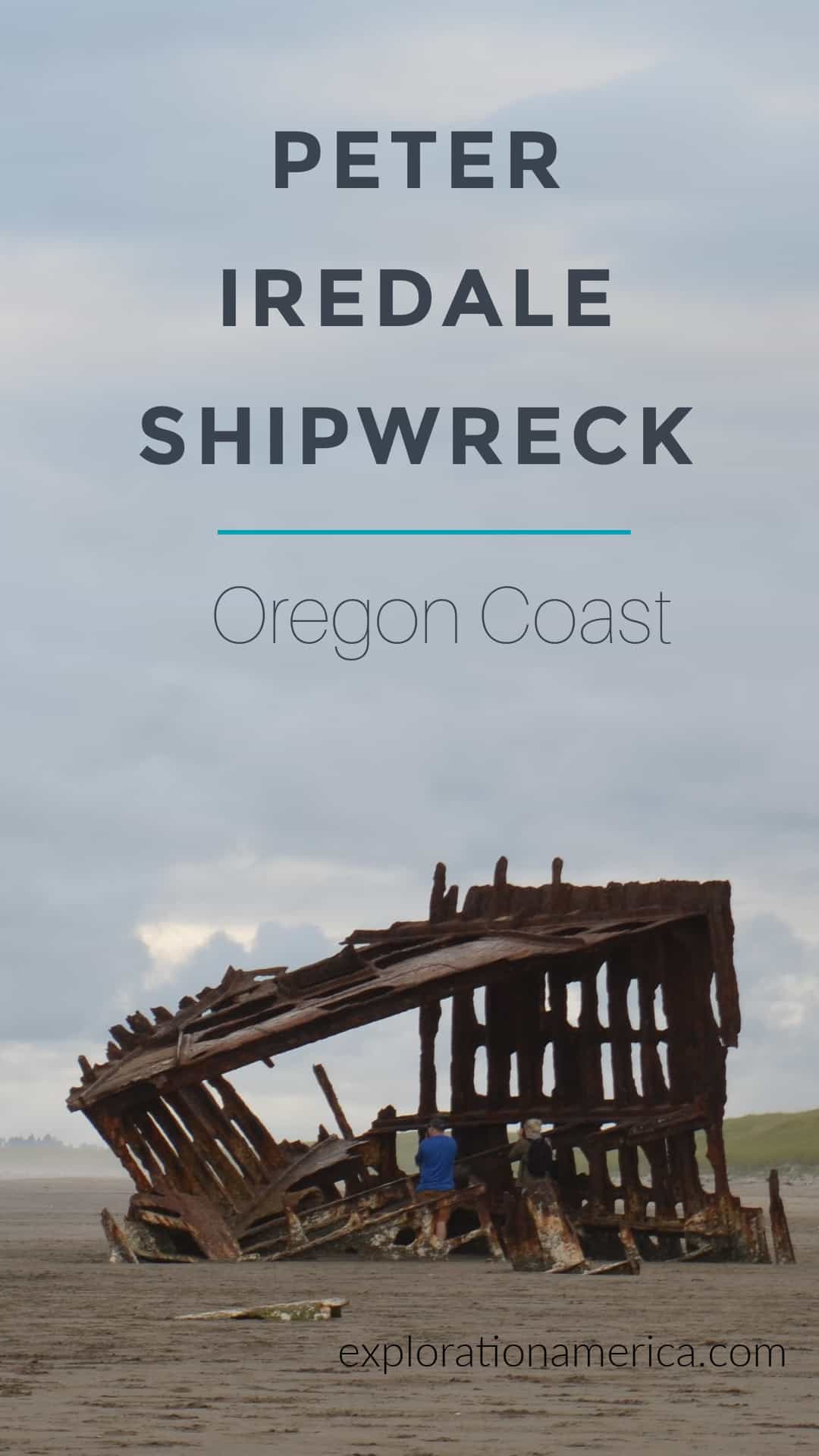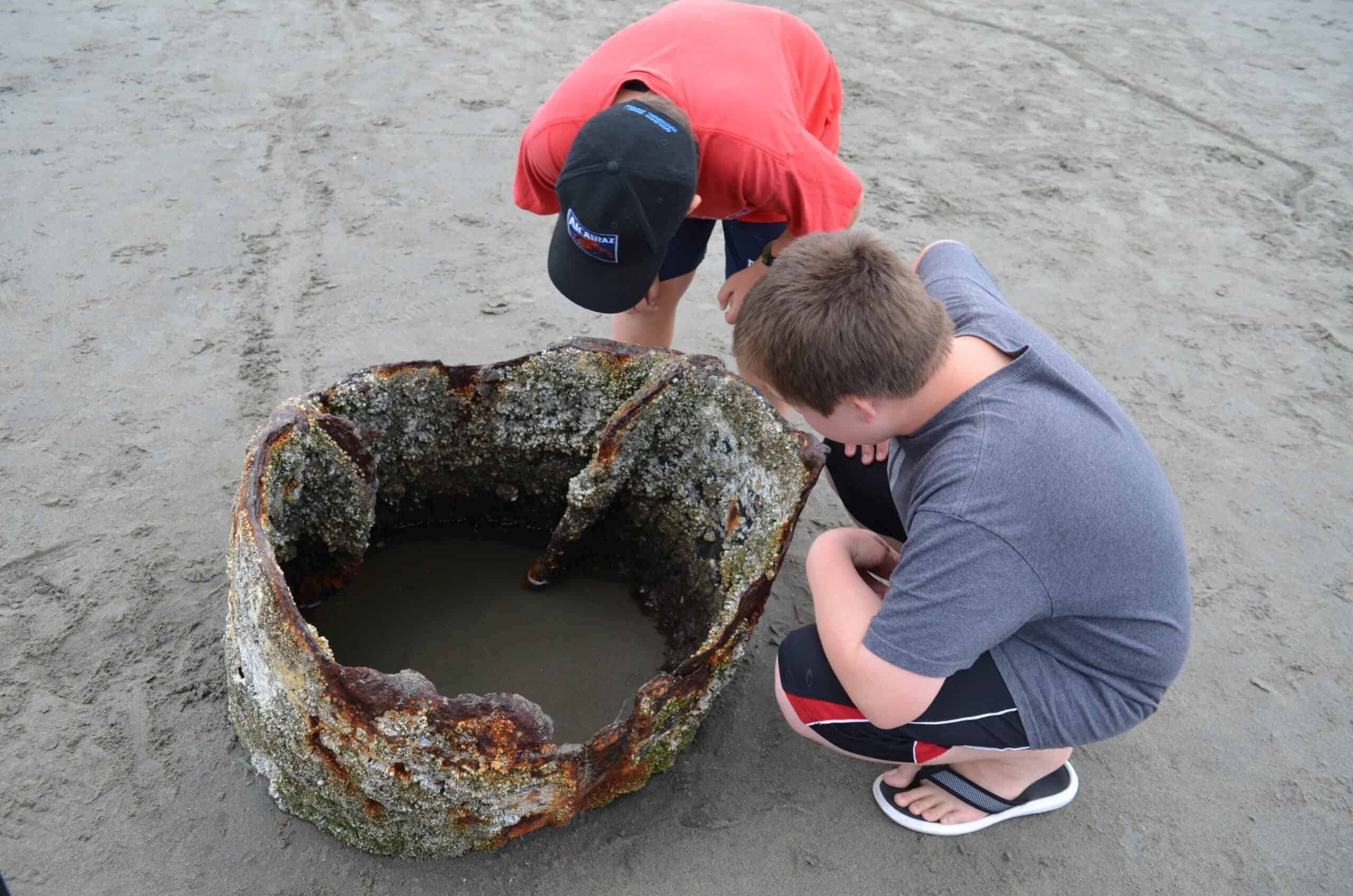Share the post "History & Where to See the Peter Iredale Shipwreck – Oregon Coast Travel"
Shipwrecks are so fascinating to me, but I had long given up hope of seeing many since I am not a diver. That is, until we stumbled across the Peter Iredale shipwreck on the Oregon Coast! I’ve since written the article on Where to See Shipwrecks Without Getting Wet for those of you who don’t dive but are interested in viewing history!

I’ve had the pleasure of visiting the Peter Iredale shipwreck multiple times over the years (as I’m deeply in love with the Oregon coast!) and the sad but fascinating thing about the shipwreck site is that erosion and weather has vastly changed the ship over the years.

It’s been a local landmark since 1906 and is one of the most photographed shipwrecks in the world! (mostly because of it’s complete accessibility in low tide!) You can discover more things to see on the Oregon Coast here!
The History of the Peter Iredale:

The Peter Iredale was a four masted steel ship in the Pacific Coast Wheat Fleet whose home port was Liverpool, England. She was originally 287 feet long, 30 feet wide, 23 feet deep – but that of course has changed over the years since her grounding.

Why did the Peter Iredale run aground?
On October 25, 1906 there was dense fog causing visibility to be difficult, and strong southeast winds which pushed the Peter Iredale into the breakers in Clatsop Spit. <Clatsop Spit is a giant sand pit (formed due to the sediment of the Columbia River) located on the Pacific Coast long U.S. Route 101 between Astoria and Tillamook Head.>

The sand pits there have taken over 2000 vessels in its history known for its danger of running ships aground just like it did with the Peter Iredale. The area became known as the “Graveyard of the Pacific”. Although there were no casualties the day the ship ran aground (in fact the ship occupants could have just walked to shore!), the ship was deemed a total loss.

In order to salvage some of the cost of its damages, the steel plates (above ground) were salvaged by the Pacific Iron Works of Astoria. It was stripped of everything of value. and today you can see the remains of what is left! (Although the rudder is now on display in the parking lot of the Columbia River Maritime Museum in Astoria.)

Due to the salt water you can see that the rust and weathering is taking its toll on this ship. There used to be much more of the ship visible. Today, during low tide, you can just make out the bare outline of the length of its ship where the masts fell as you walk around the shipwreck. You can see tons of photos of the Peter Iredale over the years on Google with a simple search.
(The shipwreck is visible no matter what the tide is at!)
Where is the Peter Iredale Shipwreck?

The shipwreck is inside of Fort Stevens State Park in Hammond, Oregon (just outside of Astoria). Fort Stevens is also part of Lewis and Clark National Historical Park. Once you’re inside the park just follow the signs to the shipwreck! You can’t miss it! They’ve done a fantastic job with their signage in the park!

The signs will take you to a parking lot along the beach. Just walk to the top of the sandy hill next to the parking lot and you can’t miss the shipwreck – it’s literally right there on the coastline! I will warn you, however, that it can be extremely windy and COLD – even in the middle of summer! I highly recommend bringing a sweatshirt or jacket!

Every time we’ve gone down to the beach it’s been very windy, bone-chilling, and sometimes even rainy. Check out some of the animal life you can see along the Oregon coast here!


We absolutely LOVE exploring Fort Stevens State Park though and usually camp there when we are in the area. Fort Stevens was a military installation which guarded the mouth of the Columbia River. Although it was built near the end of the Civil War, it’s 4300 acre park, shipwreck, and military structures are open to the public for exploration today!
Explore More Popular Posts:
Share the post "History & Where to See the Peter Iredale Shipwreck – Oregon Coast Travel"





Leave a Reply